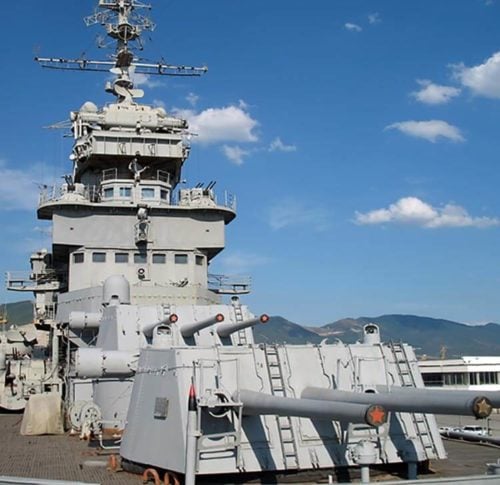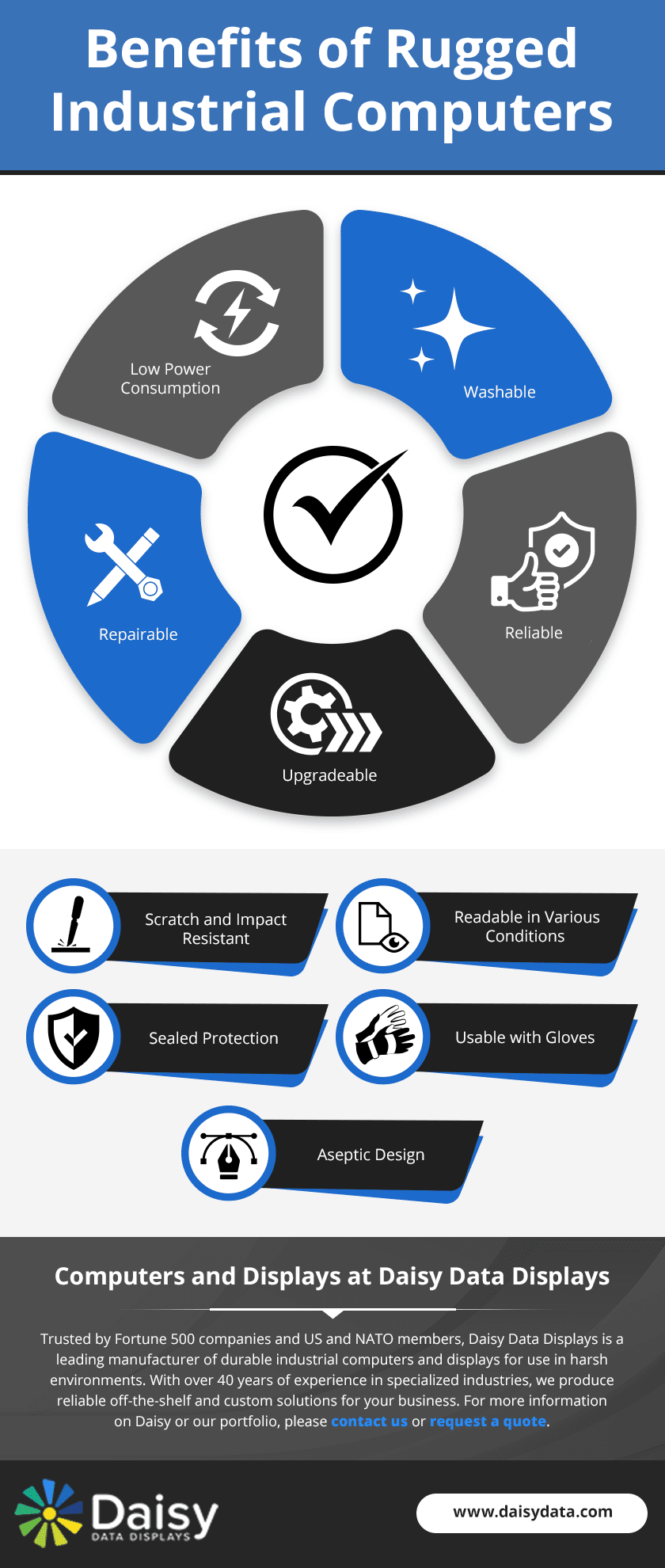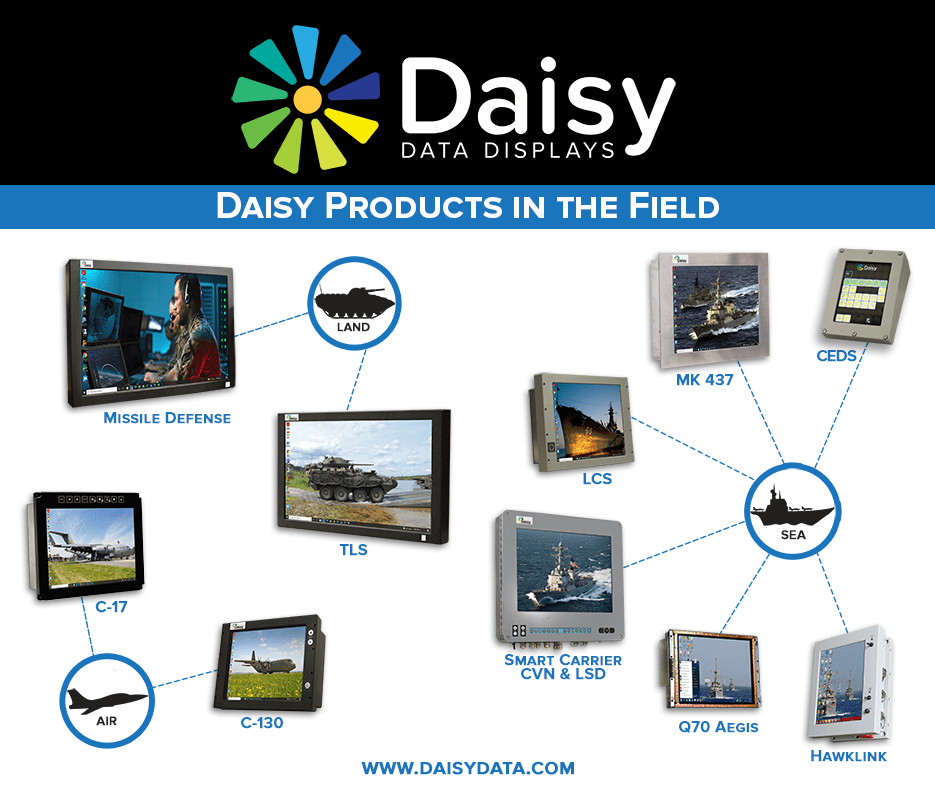A Guide to Military-Grade Computers and Displays
Computers and displays that meet military specifications (MIL-SPEC) offer a higher caliber of durability as compared to standard consumer or commercial computers. MIL-SPEC computers are built for reliability and can withstand adverse conditions for long periods of time. Also called rugged computers, these machines can survive environmental aspects most computers could not handle, including exposure to extreme temperatures, wet or dusty environments, or strong vibrations. MIL-SPEC equipment initially started out with a designation for military application, but they are now also used in industrial work.
About Military-Grade Computers and Displays

Rugged military computers endure rigorous testing to ensure they will continue operating even when struck by debris or other instances on the field. Proper performance is essential as malfunctioning devices could result in the loss of human life.
The realm of heavy industry often involves adverse conditions as well, and in places where servicing the hardware would be difficult. Rugged computers are an excellent fit for these tasks as they are already tested for rough wear and don’t need to be serviced often. Industries as diverse as aerospace, construction, and offshore oil drilling sometimes even use MIL-SPEC computers and military computer screens due to their durability and convenience.
Benefits of Rugged Industrial Computers
Rugged industrial computers are designed to last as long as possible. This aspect is critical, especially in conditions where computers typically fail in extreme temperatures or exposure to dust or glass particles, water, and locations that produce intense vibrations or electromagnetic emissions.
No matter the environment, rugged computers need to be versatile and flexible to changing conditions and customizable and expandable to fit the job. Their strength is that they have no fans or cables and are generally a one-piece design with low power consumption needs. Also, they usually feature sealed keyboards to protect them from dust, sand, and liquids, and TFT screens for HMI purposes that are scratch-resistant and readable in direct sunlight and, when displays have night-vision technology, in darkness. This durability allows for cost savings as it cuts down on equipment replacement and repair needs.
Computers and displays can be customized specifically for the industry in which they will be used. Each application comes with its unique set of specifications, rating systems, and material requirements for computers and displays. Some examples of the military applications that integrate rugged computers & displays include:
- Server rooms
- Vehicles
- Ship bridges
- Mission control rooms
- Military Standards and Specifications
Rugged computers adhere to stringent military standards (MIL-STD) that the military sets for its equipment.
These range from the computer’s interface and design to its manufacturing and testing. Standards and testing include:
- MIL-STD-167. With naval applications, computers and displays meeting this standard reliably operate despite the vibrations of ships and shipboard equipment.
- EMI MIL-STD-461E. This standard’s testing applies to the need for devices to withstand electromagnetic interference (EMI) emissions.
- MIL-STD-810. To ensure that the design specifically matches the environment for its intended use, testing for this standard attempts to replicate how the environment’s effects will influence the equipment and its functionality.
- MIL-S-901D. Grade A Shock and Vibe. Reviewing shipboard materials, this standard tests that equipment is able to hold up against shock loadings that may occur during weapon use.
- MIL Standard 740-1 Airborne Noise. To reduce hearing loss, allow normal levels of speech, and lower the chances of detection by enemy forces, machinery goes through testing to ensure the levels of noise they produce do not exceed maximum designated limits.
MIL-SPEC Computers and Displays at Daisy Data Displays
Trusted by Fortune 500 companies and US and NATO members, Daisy Data Displays is a leading manufacturer of durable industrial computers and displays for use in harsh environments. With over 40 years of experience in specialized industries, we produce reliable off-the-shelf and custom solutions for your business. For more information on Daisy or our portfolio, please contact us or request a quote.



